Selalu berkembang dan mempesona
This trip to the Galápagos Islands would be my first international dive expedition since the COVID-19 pandemic. We had to postpone our scheduled 2020 departure to May 2021, so I had plenty of time to research the destination. The last time I’d dived the Galápagos was in 2006, and my memories were hazy.
Hal pertama yang saya lakukan adalah membuka beberapa edisi belakang Alert Diver untuk melihat apa yang disoroti oleh teman-teman saya sebagai kenangan paling berkesan dari perjalanan mereka. Baik Alex Mustard maupun Brandon Cole memiliki satu penyelaman khusus yang begitu istimewa sehingga mereka memilih untuk membuka laporan perjalanan mereka dengan penyelaman tersebut.
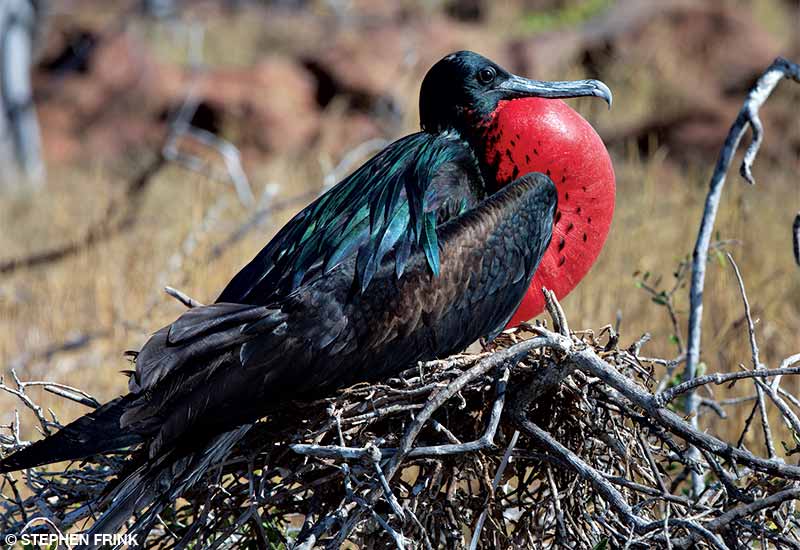
In 2018 Alex wrote about his encounters with huge whale sharks, Galápagos sharks and hammerheads during a dive on Wolf Island. Brandon found inspiration at Darwin Island, where he experienced the sight of a massive school of hammerheads before swimming through Darwin’s Arch to a world of jacks, tuna, dolphins, silky sharks and moray eels.
After returning from my recent trip, having experienced the Galápagos once again, I pondered what single dive would be significant enough to count as the best. I’m not surprised that it was Darwin Island, as it was for Brandon, although his narrative about Darwin’s Arch wasn’t the case for me. The day before we arrived, the top portion of the famed arch collapsed, leaving Darwin’s Pillars, or whatever name popular consensus bestows upon it in the years to come.
Setelah tiba di Bandara Seymour di Pulau Baltra pada sore hari, kami pergi ke liveaboard kami dan mengikuti pengarahan keselamatan dan penyelaman yang santai. Checkout penyelaman kami keesokan paginya di Pulau Seymour Utara had the potential to be great. We descended along a rocky ledge, where crevices provided moray habitats, to a sand seafloor at 45 feet littered with whitetip reef sharks. The abundant schooling fish included bluestripe snappers and Galápagos grunts. The dive was a mixed bag because of the turbid water — great critters but marginal visibility.

We spent the afternoon topside on North Seymour. The Galápagos has amazing terrestrial attractions, but most liveaboards can do only a couple of land tours during their week at sea. A second week on a boat dedicated to land tours would be a more immersive adventure for anyone with ample time and money. The guides are extraordinarily knowledgeable, and even our short excursions to see frigate and booby birds, land iguanas and sea lions were inspiring.
Keesokan paginya kami berada di Pulau Serigala, where I expected significant current, but that wasn’t the problem — instead, surge limited us to diving only Shark Bay. Ombak besar di lokasi penyelaman terkenal lainnya, Tanah longsor, made it unsafe, and the visibility would have been lousy. Landslide is a very productive site for capturing the iconic walls of hammerheads for which the Galápagos is famous, but Shark Bay offered a glimpse of how good it could be. We had some reasonably close encounters with Galápagos sharks, but the hammerheads were shy. Our whole dive group did everything right — tucking into the rocks, spreading out and not chasing the sharks — but the encounters still were modest. It was bad luck that the weather kept us from diving Landslide, but that’s typical of Galápagos diving, and you have to be adaptable.
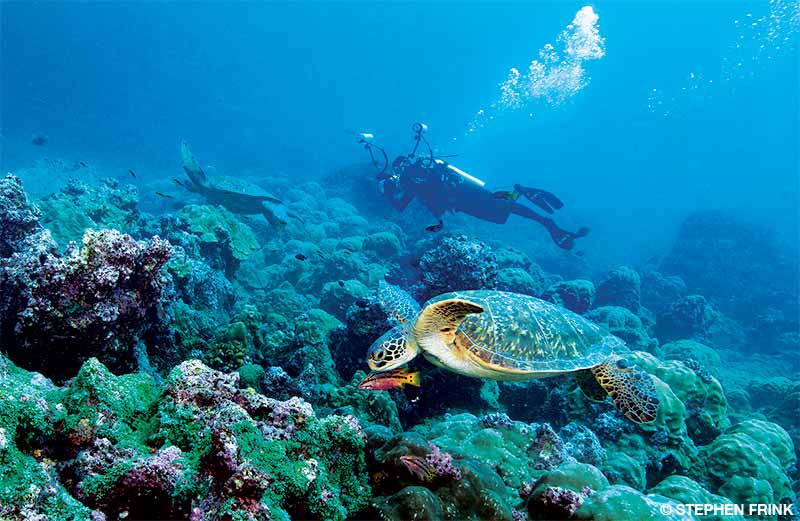
Kami mengukus semalaman dan bangun di Pulau Darwin. Setelah melaju melalui potongan permukaan yang ringan dengan perahu selam kami, kami mengikuti instruksi untuk turun ke rak di ketinggian sekitar 60 kaki dan menunggu parade ikan paus lewat. Hal itu lebih mudah diucapkan daripada dilakukan; meskipun kami tidak mengalami arus ekstrem yang terkadang menyapu lokasi ini, kami mengalami gelombang yang signifikan bahkan di kedalaman. Sungguh menjengkelkan ketika kami bersiap-siap untuk memotret penyu yang sedang menggigit batu yang tertutup ganggang, lalu tersapu sejauh 10 meter di luar jangkauan kamera sebelum menekan tombol rana.
Saya sudah pasrah melihat foto-foto hiu martil kecil di kejauhan dan ikan kupu-kupu yang tidak sengaja bergerak kabur di sebuah stasiun pembersihan, ketika suara gedoran tangki dan gerakan tangan pemandu selam kami mengumumkan bahwa sesuatu yang megah telah menanti kami. Dia menunjuk dengan tegas dan berulang kali ke arah lautan biru, dan saya tahu itu pasti hiu paus. Namun, saat itu masih bulan Mei, bukan musim hiu paus. Apa pun yang berhubungan dengan iklim sulit diprediksi akhir-akhir ini, jadi mengapa migrasi hiu paus harus berbeda?
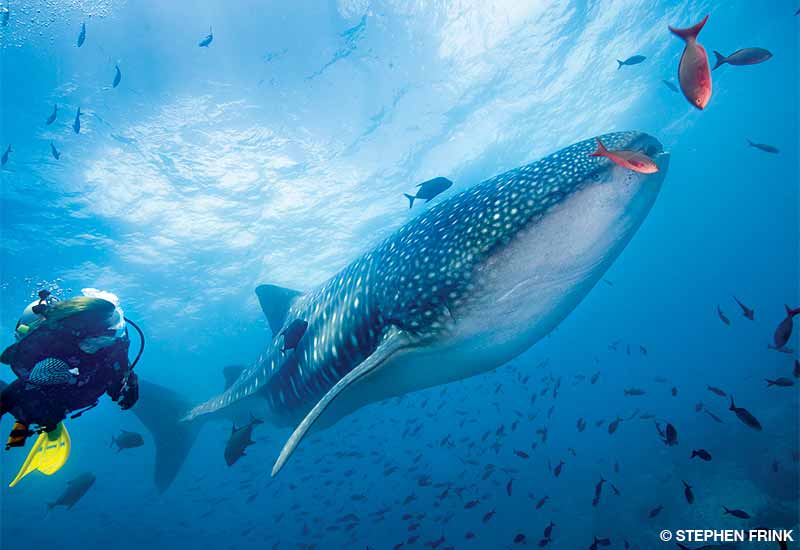
Sure enough, a small whale shark swam into view with our dive guide furiously finning to keep up. I kicked into overdrive to stay ahead of them for the brief time I could sustain it. The whale shark foreground and diver background made for a great scale reference. While this might have been only a juvenile, “small” is relative — it was still an impressive 20-foot fish. I knew I had a significant shot in the can and thought I could go back to the ledge and catch my breath for a moment, but no. What had been a marginal dive just 10 minutes before now brought another whale shark, this time a 45-foot behemoth. My 16-35mm lens was racked out as wide as it would go, and there was still way too much fish for my proximity. I was going to settle for just a headshot when I saw another diver swimming flat-out alongside me to get a closer view. I slowed down and let them both occupy the same frame for another shot. With a tail swish the whale shark continued into the distance as we realized we were uncomfortably far from home base and called off the encounter.
The group had two passes with the juvenile and the adult as they swam wide loops around our platform. As we swam seaward for our boat pickup, a massive school of bigeye trevally swirled about, cheerleaders for what had become a stellar dive. In retrospect, that’s another thing the Galápagos is all about — the predictably unpredictable pace of the encounters. We did three dives on Darwin that day and saw whale sharks on each. The last dive of the day delivered two whale sharks, a pod of dolphins, six turtles and dozens of scalloped hammerheads. The light was low and the water clarity marginal, but the action was off the charts.
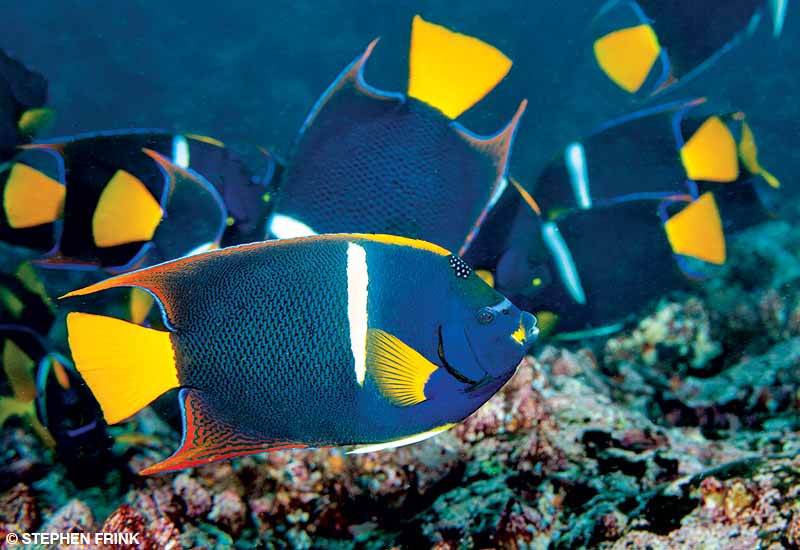
Divers usually spend one full day at Wolf and another at Darwin since the islands are only 25 miles apart. That’s what our itinerary with the Galápagos National Park stipulated, but we requested an extra day to dive Darwin in the morning and use our lunch break as a surface interval and cruise time back to Wolf. It didn’t inconvenience any other liveaboards in the region, so the park administration agreed, and we had another incredible dive to start the day at Darwin.
In the afternoon we were back at Wolf, but Landslide was still too bumpy to dive. We had become familiar enough with what to expect at Shark Bay that we all loaded up with whatever lens would work best — I chose a 16-35mm zoom. By this time in the trip I knew my hammerhead possibilities were almost over, and I didn’t have what I wanted. In the last 10 minutes of the final dive at Wolf, however, I had one nice pass from a school of hammerheads. I’ll always wish I had been closer, but it was good enough for this trip anyway. I’ll have to try harder when I go back in 2024.
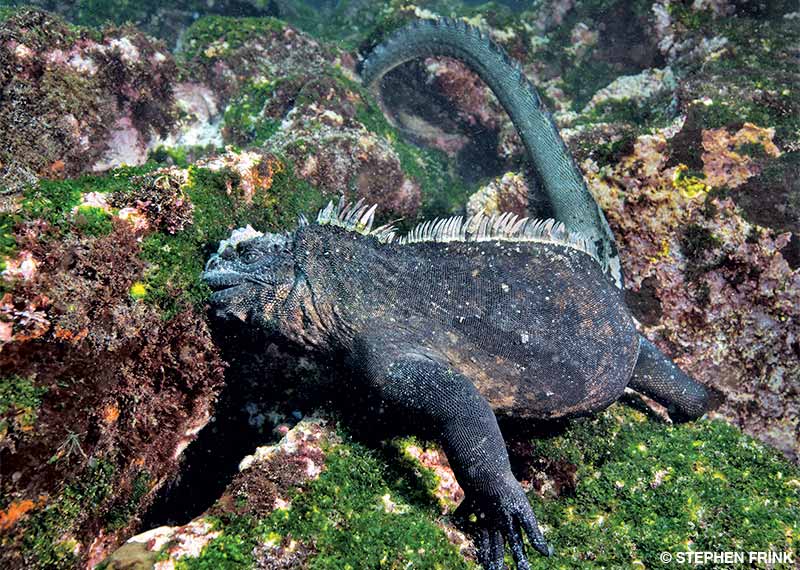
The liveaboards have refined their dive adventures in the western islands over the past few years. This area is also known as the Ice Box for the colder ocean currents that sweep the region, so you will want to be prepared for water temperatures in the low 60°F range. While that seems unpleasant for tropical dives on the equator, without the cool water you wouldn’t have the Galápagos penguins or the star of our morning island cruise: an orca.
Kami mengisi kedua sampan dengan kamera dan tas kering. Tujuan kami adalah untuk berkeliling Cabo Douglas di sisi barat laut Pulau Fernandina untuk mengambil foto iguana laut, burung pelikan, burung kormoran, dan penguin dari atas kapal. Kami melihat semburan napas di kejauhan dan mengalihkan haluan, mengira itu mungkin paus. Namun, kami melihat seekor paus orca yang sedang berpatroli di bibir pantai, mungkin sedang mencari singa laut yang malang. Belakangan saya mengetahui bahwa daerah ini memiliki kawanan orca, dan perjumpaan ini bukanlah hal yang aneh. Setelah kami merasa cukup puas, kami membiarkan orca tersebut melakukan aktivitasnya dan kembali ke garis pantai untuk memotret burung-burung laut dan iguana.
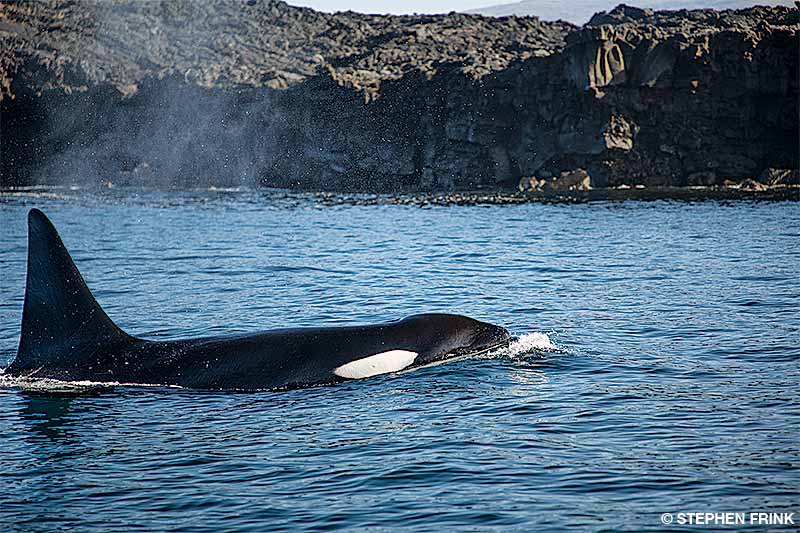
Bird-watching was a great way to spend the morning while waiting for the marine iguanas to get warm enough by sunning themselves on the shoreline to dive into the shallows and gorge on the algae cloaking the rocks. Then we would dive in as well. Once settled in to eat, the iguanas are indifferent to divers and strobe flashes, providing interesting photo opportunities — and making it worth including these islands in the cruise itinerary. Adding the wall dive at Punta Vicente Roca menjadikannya lebih istimewa, dengan kesempatan untuk melihat Mola mola di stasiun pembersihan pada ketinggian 80 hingga 100 kaki dan singa laut yang menyelam di perairan dangkal.
There are many dives in the central islands — more than we had time for on this cruise. If you stay in a hotel on Santa Cruz Island and dive with the day boats, you could spend a week here and never do the same dive twice. Since we spent our last night on the boat anchored off Santa Cruz, we did our final two dives nearby at a Galápagos favorite, Sepupu Batu.
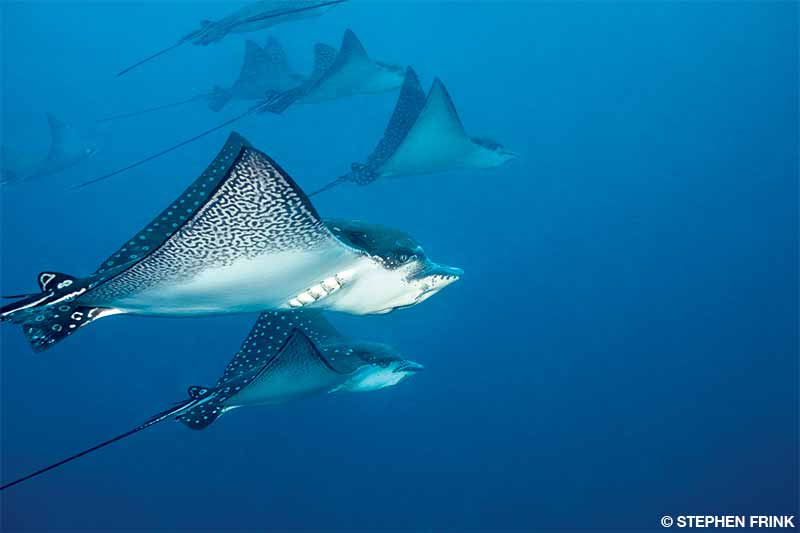
Cousins Rock is great for macro. The small rock just off the north coast of Bartolome Island has seahorses and hawkfish among the black corals and Gorgonia sea fans. However, I couldn’t resist another dive with my 16-35mm wide-angle zoom, which turned out to be a fortunate choice. Not only were parrotfish and whitetip reef sharks tucked into the striated ledges, but eagle rays and a large school of barracuda also came into view just over the drop-off into the blue.
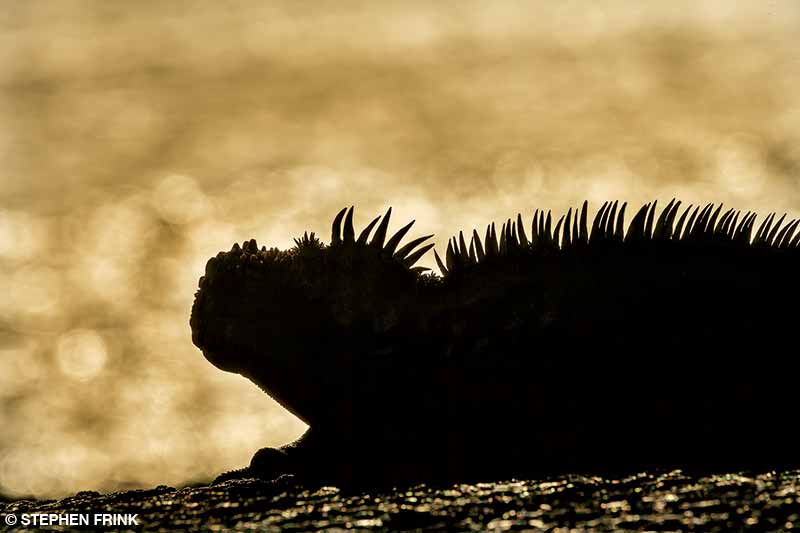
Our second and final shore excursion was to the highlands of Santa Cruz Island to see the totem of the Galápagos: the giant tortoise. Once so abundant, with a population thought to be more than 200,000, the 13 remaining species of tortoise comprise just 10 to 15 percent of that number. A 40-minute bus ride into the highlands brought us to a private tortoise reserve. Measuring more than 5 feet long and weighing more than 500 pounds at their largest, the tortoises are hard to miss and easy to photograph as they meander through the lush grasses.
I gauge the success of a dive trip by how soon I’d like to return. The seven days in the Galápagos went by too quickly, and I was ready to come back before I had even left. The Galápagos National Park and the tour operators greatly respect the destination, and conservation is their primary goal. Even with all the protections in place, the fishing industry, climate change and ocean health pressure the archipelago. Every tourist dollar that goes into the Galápagos adds persuasive emphasis that this is a place that deserves ongoing and stringent protection.

Cara Menyelam
Lokasi: Located nearly 600 miles west of Ecuador, the archipelago has 19 large islands among its approximately 128 islands, islets and rock formations, but people inhabit only four. The Ecuadorian government manages Galápagos National Park, which is also a UNESCO World Heritage Site. It protects 97 percent of the land, which hosts hundreds of endemic wildlife species.
Sampai di sana: The Galápagos has no direct flights — international arrivals are at either Guayaquil or Quito in Ecuador. Visitors usually spend the night before boarding a short domestic flight to Baltra Island or San Cristobal Island.
Iklim: The Humboldt, Panama and Cromwell currents influence the area’s climate and sea conditions. Because the Humboldt and the Cromwell surge from the great depths just offshore, they bring massive amounts of nutrients and keep the waters cool despite their equatorial location. The Humboldt Current is a vibrant ecosystem that influences life both above and below the waterline. It is strongest from June through November, which is also whale shark season, but grows weaker as the warmer Panama Current strengthens in December.
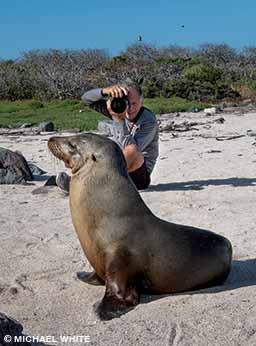
Galápagos penguins depend on the confluence of the Humboldt and Cromwell currents for cool water, and the sea lions feed on the fish that the Humboldt transports. Wildlife typically seen far to the south, such as albatrosses and orcas, are here due to the Humboldt. In El Niño years, the reduced upwelling and weaker trade winds keep the water warm. This unusual warmth means divers need less thermal protection, but fewer nutrients are available for creatures throughout the islands.
Musim: Galápagos has two discernible seasons. The high season for dive tourism is from July to November. Despite the diminished water clarity and stronger currents, there are abundant whale shark sightings. You can see hammerheads and much of the other prolific marine life that defines the Galápagos underwater world year-round, but in low season the water is warmer and the visibility is better.
Kondisi: Because of the currents, average water temperatures vary between the mid-60s°F and 80s°F, depending on the season and location. Thermoclines can dip significantly colder in Punta Vincente Roca and Cabo Douglas, but the tradeoff is seeing creatures found nowhere else in the islands and the best underwater marine iguana encounters. I brought both 5 mm and 7 mm wetsuits for this trip and layered them with a hooded vest. I wore open-heeled fins so I could use booties, and I had gloves for gripping the rocks in current and surge as well as for thermal protection. Tropical gloves were fine for most of the trip except the colder western island dives. Galápagos is a destination for at least intermediate divers. A beginner might find the temperatures and currents on some dives challenging and stressful.
Liveaboard atau agen perjalanan Anda akan menjadi sumber informasi terbaik untuk informasi terkini mengenai persyaratan perjalanan dan masuknya COVID-19, tetapi Anda juga dapat mengunjungi situs web Kedutaan Besar AS di Ekuador di ec.usembassy.gov untuk pembaruan.
Akomodasi dan pertimbangan: You can stay in a hotel on Santa Cruz Island and make day trips, but you’ll need to book a liveaboard to get north to Wolf and Darwin islands. Most diverse and productive diving in the Galápagos is from liveaboards.
It’s necessary to carry some cash, and Ecuador uses the U.S. dollar. I brought cash for the $75 antigen test for reentry into the U.S. (I had a swab arranged in advance and taken on my liveaboard), $35 recompression chamber support fee, $100 for the cash-only Galápagos National Park entry fee, a $10 mandatory transit card fee, and extra money for gratuities.
Banyak informasi perjalanan tambahan tersedia di igtoa.org/travel_guide.
Jelajahi Lebih Lanjut
See more of enchanting Galápagos in Stephen Frink’s bonus gallery.
https://dan.org/alert-diver/article/galapagos-photo-gallery/© Alert Diver - Q3/Q4 2021